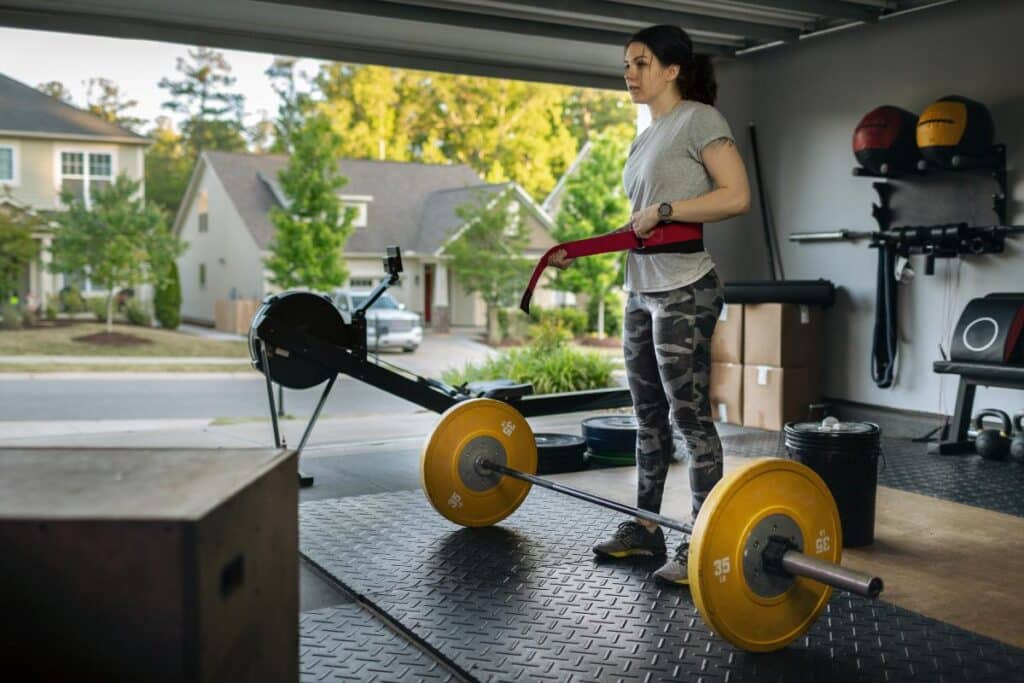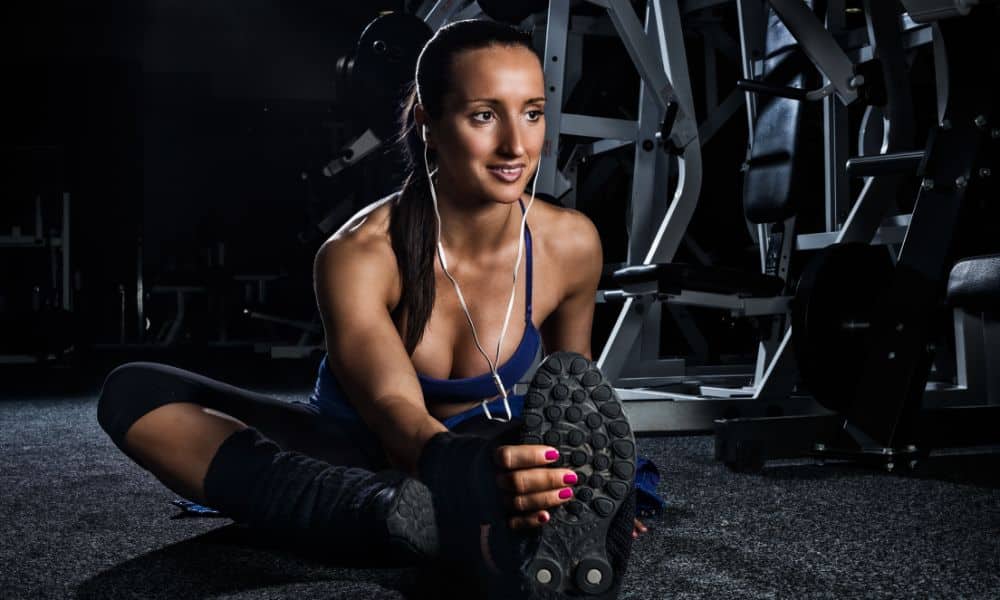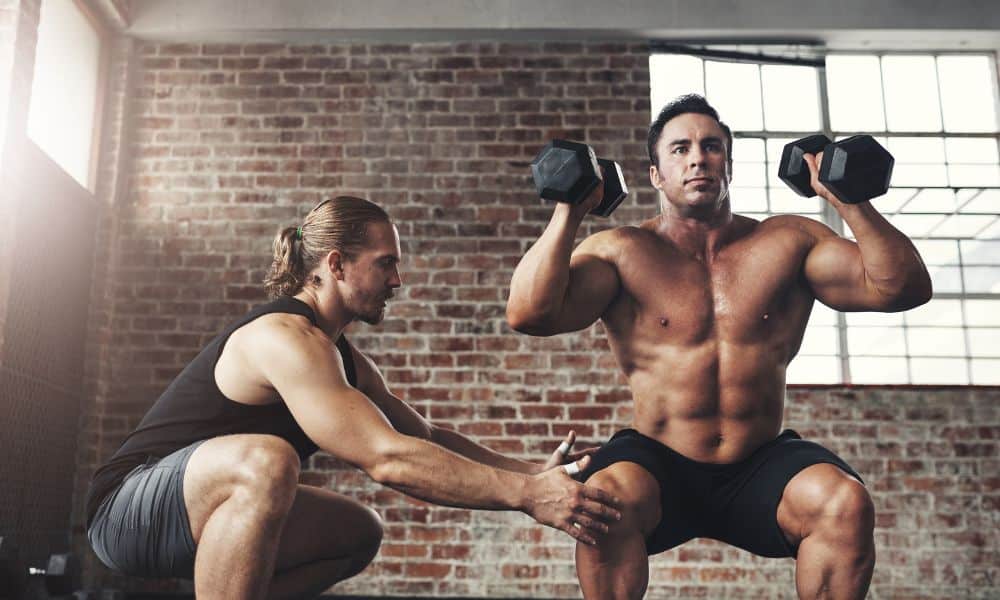Choosing the right weightlifting belt is essential to support and stability during heavy lifts, protect your lower back, and prevent injuries. If you’re looking for your first belt, it can be confusing due to the many options available. This weightlifting belt guide is sure to help you make the best decision.
Whether you go for a leather or a fabric belt, whether you opt for Velcro fastening, a single or double prong, or a lever belt, these are all factors that need to be considered.
In addition, spending a bit extra on quality is better to ensure you’ll get a belt that will last. Just because that belt you saw on Amazon has many reviews, it doesn’t mean it’s a good belt.
Often, these belts are made with cheap fillers, for example, the lowest quality leather, maybe even cardboard. Before you know it, the belt will crack, and you’ll look for a replacement. You don’t want that.
Here is a guide to help you choose the right weightlifting belt and get the best bang for your buck:
1. Goals and Needs
- Consider your training goals and the exercise you’ll perform with the belt (e.g., powerlifting, Olympic weightlifting, bodybuilding).
- Think about any existing injuries or weaknesses that may require additional support.
2. Types of Weightlifting Belts
- There are primarily two types of weightlifting belts: powerlifting belts and Olympic weightlifting belts.
- Powerlifting belts are typically wider in the back, providing more stability for heavy squats and deadlifts.
- Olympic weightlifting belts are narrower in the front and taper towards the back, allowing for more flexibility during movements like cleans and snatches.
3. Waist Measurement
Measure your waist circumference at your navel or just above your hip bones to determine the correct belt size.
Do not rely on your pants size, as it may not be accurate for selecting a weightlifting belt.
4. Belt Width
Powerlifting belts are typically 4 inches wide all the way around.
Olympic weightlifting belts are often 4 inches in the back and narrower (around 2-3 inches) in the front.
5. Material and Buckle Type
Weightlifting belts are usually made of leather or synthetic materials. Leather belts are durable and last longer, while synthetic belts may be more budget-friendly.
Decide whether you want a single-prong, double-prong, or lever belt closure. Single-prong and double-prong belts are adjustable but may take longer to put on, while lever belts have a quick-release system for easy adjustments.
6. Different Types of Belts
Visit a sports equipment store or a gym that allows you to try on different belts to see which one feels most comfortable and suits your needs.
7. Proper Fit
A weightlifting belt should fit snugly but not too tight. You should be able to tighten it to provide support without restricting your breathing or causing discomfort.
Ensure the belt supports your lower back and core when you engage your core muscles.
8. Budget
Weightlifting belts come in a wide range of prices. While quality is essential, you should also consider your budget when choosing.
9. Expert Advice
If you’re unsure which weightlifting belt to choose, consult experienced lifters, trainers, or coaches for recommendations.
10. Read Reviews
Online reviews and recommendations from reputable sources can provide valuable insights into the performance and durability of different weightlifting belts.
Remember that the right weightlifting belt for the gym may vary depending on your needs and preferences. Choosing a belt that provides the support and comfort you need is essential for enhancing your lifting performance while reducing the risk of injury.
Olympic Belt vs Powerlifting Belt
Olympic weightlifting belts and powerlifting belts serve different purposes and have distinct designs to cater to the specific needs of each sport. Here are the main differences between the two:
1. Design and Width
Olympic Weightlifting Belts are typically narrower in the front and wider in the back. They often taper to around 2-3 inches in width in the front and expand to 4 inches in the back. The taper allows for greater mobility in exercises like cleans and snatches.
Powerlifting belts are consistently wide, usually 4 inches in width all the way around. The uniform width provides maximum support for the lower back and abdomen, crucial for heavy squats, deadlifts, and bench presses.
2. Buckle Type
Olympic Weightlifting Belts typically use a quick-release or single-prong buckle, which allows for faster adjustments during fast-paced Olympic lifts.
Powerlifting belts commonly use single-prong, double-prong, or lever belt closures. These provide a secure and firm fit for heavy, slow lifts, but they may take slightly longer to adjust.
3. Material
Olympic Weightlifting belts are often made from more flexible materials like nylon or synthetic blends. They are designed to provide support while allowing for dynamic movements.
Powerlifting belts are frequently made of thicker, stiffer materials, such as leather. The stiffness helps to maximize intra-abdominal pressure, which is critical for powerlifting movements.
4. Usage
Olympic Weightlifting belts are primarily used by Olympic weightlifters for movements like the clean, jerk, and snatch. They are designed to offer support without impeding flexibility and speed during these explosive lifts.
Powerlifters use powerlifting belts during squats, deadlifts, and bench presses. They are intended to provide maximum support for heavy, controlled lifting.
5. Mobility vs. Stability
Olympic Weightlifting belts prioritize mobility and flexibility, allowing lifters to move quickly and maintain a more upright posture during lifts.
Powerlifting belts prioritize stability and support, providing a rigid platform for lifters to brace against and maintain a strong, neutral spine position during heavy, slower lifts.
In summary, the key differences between Olympic and powerlifting belts are their design, width, buckle type, material, and intended use. Choosing the right belt based on the specific demands of your chosen sport or training style is essential to maximize its benefits and performance.
Benefits of Wearing A Weightlifting Belt
Wearing a weightlifting belt can offer several benefits when used correctly during strength training and heavy lifting exercises. However, it’s essential to understand that a weightlifting belt is unnecessary for all lifters or workouts. Here are the potential benefits of wearing a weightlifting belt:
Improved Core Stability: A weightlifting belt can help increase intra-abdominal pressure, stabilizing the spine and core. This added stability can assist in maintaining proper posture and reducing the risk of lower back injuries during heavy lifts like squats and deadlifts.
Increased Lifting Performance: With enhanced core stability, lifters may find it easier to generate more force and lift heavier weights. This can lead to improved strength gains over time.
Reduced Risk of Injury: The added support provided by a weightlifting belt can minimize the risk of hyperextension or excessive spine flexion, especially during maximal or near-maximal lifts.
Enhanced Mind-Muscle Connection: By wearing a belt, some lifters may find it easier to focus on the targeted muscle groups, as they feel more secure and supported. This improved mind-muscle connection can lead to better muscle engagement and growth.
Greater Confidence: Knowing that you have added support from a weightlifting belt can boost your confidence when lifting heavy weights, helping you push your limits and set new personal records.
Lower Fatigue: The belt can help reduce the load on the lower back and core muscles during strenuous lifts. This can decrease fatigue and allow you to perform more reps or sets with higher intensity.
Injury Rehabilitation: Weightlifting belts can also be beneficial during the rehabilitation of lower back injuries. They support the injured area, allowing for safer and more controlled strengthening exercises.
It’s essential to use a weightlifting belt correctly to maximize its benefits and minimize potential drawbacks:
- Don’t over-rely on the belt: A weightlifting belt should not replace proper technique, core strength, or warm-up routines.
- Use it for heavy lifts: Weightlifting belts are most effective for compound exercises involving heavy loads, such as squats, deadlifts, and overhead presses.
- Ensure proper fit: The belt should fit snugly but not be too tight. It should support your lower back and core when you engage your abdominal muscles.
- Gradually increase belt use: If you’re new to using a weightlifting belt, start with lower weights and progressively incorporate it into your training routine.
Final Words
Whether or not to wear a weightlifting belt depends on your individual goals, training style, and preferences. We hope this weightlifting belt guide provided you with valuable information you can use to make a well informed purchase. It’s advisable to consult with a fitness professional or coach to determine if a weightlifting belt is appropriate for your specific needs and goals.




